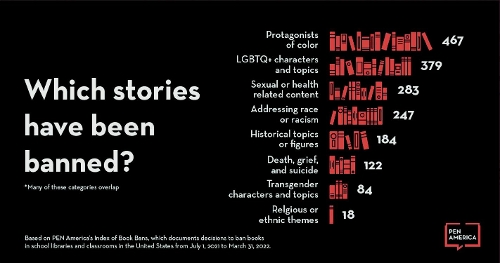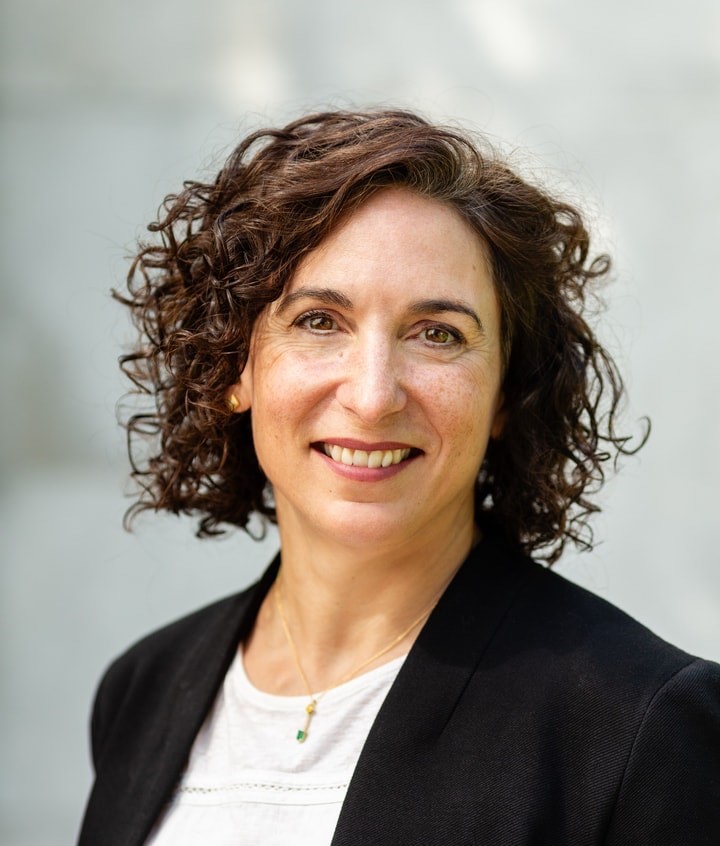Field Notes: Beyond the "Hero's Journey": We Need Diverse Curricula
What were you required to read in tenth grade? Maybe you graduated many years ago, and you assume that since so much has changed in the larger cultural conversation, certainly high-school English would also have changed. So many good books have been published since then, you might think. But I wager that the books you read “way back when” are very similar to what my tenth grader has read in the 2022–23 school year.
What were you required to read in tenth grade? Maybe you graduated many years ago, and you assume that since so much has changed in the larger cultural conversation, certainly high-school English would also have changed. So many good books have been published since then, you might think. But I wager that the books you read “way back when” are very similar to what my tenth grader has read in the 2022–23 school year. I say that because during that harried first back-to-school week, I received his English syllabus, and, English nerd that I am, I actually read it.
And cried. And raged. And, I’ll admit, angrily posted about it on social media.
I live in an award-winning public school district that has plenty of resources and dedicated teachers. Families specifically move into the district for its schools. That said, the lack of diversity in the English curriculum was shocking. The list featured some of the usual suspects. It had Shakespeare’s Macbeth and some Romantic poets. Fahrenheit 451, All Quiet on the Western Front, and poems about trench and chemical warfare. I soon realized it contained not a single female-identified author; furthermore, only one writer was a person of color. “Modern” literature was represented only by Jon Krakauer’s Into the Wild (1996) and Khaled Hosseini’s A Thousand Splendid Suns (2007). What really set my teeth on edge were some of the organizing rubrics. The semester started with a look at the “Hero’s Journey,” and an excerpt from Joseph Campbell’s The Hero with a Thousand Faces. Campbell’s work and its adaptation to secondary English curricula are problematic for many reasons. For one, Campbell insists on a common pattern present in all narratives that derives from a central mythology whose default protagonist is male (and usually white). Also, as noted by Michelle Kenney in “Why I Don’t Teach the Hero’s Journey”: “because of its singular focus on the development of the individual, the hero’s journey does nothing to help our students progress toward the goal of becoming well-educated critical thinkers and thoughtful citizens of a democracy,” which are necessary for social change and thoughtful progress.
I am not the kind of parent who complains. Let teachers teach, I’ve always thought. But I couldn’t help myself. After I cooled down, I wrote a letter in which I felt compelled to make the case for what I consider self-evident truths: that a literature syllabus for all students should contain representation by more than just one gender; that, in the nearly seventy years since the civil rights and women’s movements, it should attempt to represent various forms of diverse experiences of the world; and finally, that it should reconsider some of its overdetermined gendered organization, as manifested through the male-only “Hero’s Journey” curriculum. In the process of doing this, I realized just how much I exist in a literary bubble of sorts. Until recently, I had taken for granted that most people believe what I do about literature, that everyone wants to or even needs to read books that feature diverse characters and experiences.
* * *
A 1989 report titled A Study of Book-Length Works Taught in High School English Courses conducted by the Center for the Learning and Teaching of Literature at the University of Albany (an institute sponsored by the National Endowment for the Arts and the U.S. Department of Education’s Office of Educational Research and Improvement) discussed the findings of a national survey of English curricula in public, private, and parochial high schools. According to the report, in 1988, high schoolers read William Shakespeare, Mark Twain, Nathaniel Hawthorne, and Charles Dickens; modern literature was introduced in the form of works by F. Scott Fitzgerald, Ernest Hemingway, Arthur Miller, Harper Lee, John Steinbeck, Anne Frank, and Elie Wiesel. I include a long quotation from the report’s conclusions because it is still entirely relevant:
The canon of texts as it emerges here shows little recognition of the works of women or of minority authors. In all the settings which we examined, the lists of most frequently required books and authors were dominated by white males, with little change in overall balance from similar lists 25 or 80 years ago. Such findings lead to fundamental questions about the nature of the literary heritage for which schools claim responsibility. Is it appropriate for this heritage to remain stable and limited, providing a restricted reference point for students from diverse backgrounds?…How, if the canon is so narrow, will young women and students from minority cultures develop a sense of their own place within that culture?
Thirty-four years later, and we could very well make the same argument, based on my child’s syllabus. What stings is that the report finds little to no change “from similar lists 25 or 80 years ago,” which means that what constitutes high school English may not have changed much since the turn of the twentieth century.
That’s quite a devastating thought for anyone who cares deeply about diversity in literary representation. Every time educators select which book goes on a required reading list, they are not just making a decision about a work’s literary qualities, but are making a larger statement about what is valued by the culture. It also begs the question about the relationship between publishing, libraries, and educators. These fields seem to be working adjacent or in parallel to one another, but don’t seem to be in dialogue. I struggle to reconcile the clear-voiced project of an organization such as We Need Diverse Books, whose mission is to put “more books featuring diverse characters into the hands of all children…[so] everyone can find themselves in the pages of a book,” and the English syllabus that came home with my child.
* * *

Image by PEN America. Image courtesy of PEN America.
In the 1990s, the “Battle of the Books” was raging, and mainstream works such as Harold Bloom’s The Western Canon: The Books and School of the Ages and Gerald Graff’s Beyond the Culture Wars: How Teaching the Conflicts Can Revitalize American Education took different stances on whether higher education literature courses should preserve or revise the traditional literary canon. There was much hand-wringing about the addition of Alice Walker’s The Color Purple, for example. We are at a similar cultural moment, but this time the battle is being fought at the primary and secondary levels. Things like critical race theory and diverse books are considered by some to be “hate speech” against whites. Ketanji Brown Jackson’s Supreme Court nomination hearing, which featured an almost surreal critique of Ibram X. Kendi’s picture book Antiracist Baby, is one example of how this has simmered up in popular culture.
There is also a shocking uptick in book bans. According to an April 2022 report by PEN America, between July 1, 2021, and March 31, 2022, there was “a profound increase in both the number of books banned and the intense focus on books that relate to communities of color and LGBTQ+ subjects.” Of the books banned in classrooms and school libraries, “there are common themes reflecting the recent backlash and ongoing debates surrounding the teaching and discussion of race and racism in American history, LGBTQ+ identities, and sexual education in schools.” This makes the task of changing the syllabus all the more fraught and daunting a task. What I am about to propose will take some courage and will likely stir the pot.

"Banned Books in the U.S." image by PEN America. Image courtesy of PEN America.
We need something along the lines of “We Need Diverse Curricula” to do two things: to revise and update what is considered foundational reading at the high school level and below and to revise and contextualize how canonical works are taught. If teachers are not familiar with literary selections that may introduce more elements of diversity into the classroom, there should be resources to expose and educate them so that they can adopt those texts into classroom reading.
That said, diverse books cannot be additive or an afterthought to a syllabus. We do not solve the problem of a lack of diversity by adding in a few works by women or people of color. We need a more foundational transformation of the syllabus that does not operate on the assumption that the default human is white and male, not to mention straight, cisgender, Christian, and typically abled, and that the addition of anything outside that is a token addition to satisfy a diversity requirement. Indeed, the very concept of the hero can be examined and revised. In “Speak with Us, Not for Us” (Horn Book Magazine, January/February 2019), Grace Lin also explains: “What diversity needs is not white authors to write heroes of a minority race, but rather for them to redefine the white hero. We need authors to create white characters who are (or are learning to become) socially aware and who fight alongside people of color, without being saviors.”
In the end, my complaint about my child’s English syllabus went to many recipients, from the teacher on up to the assistant superintendent, and was met with sympathetic ears. I know, everyone seemed to say. We’re working on it. Revisions were underway at the school; eleventh and twelfth grade syllabi had been revised, and ninth and tenth were next. I somewhat cheekily asked if, in a few years, when my daughter would be in tenth grade, the syllabus would look any different. It definitely would, they assured me.
My complaint about the syllabus lacking diversity was in the minority, however; teachers reminded me that they often fielded complaints from parents not wanting their children to read work by nonwhite writers. I was encouraged to keep making my views known, so the school district would know there are parents out there who care about diversity and representation. So here I am, making good on that promise, and I ask the same of you. When you peel back the curtain of your high school syllabi, what do you find? If you care about your child reading diverse books in high school, take a moment to read their syllabi and make your views known (with respect) to teachers and school administrators.
High school English class should be not just a place where good literature is read and discussed but also a place to train students how to think critically, construct points of view, craft arguments, conduct research, and write coherently. I realize that there’s a lot more going on in an English class besides what books are listed on the syllabus, but it’s demoralizing to discover, in my son’s case, that what passes as literary heritage has barely changed a beat in two centuries.
From the May/June 2023 special issue of The Horn Book Magazine: Diverse Books: Past, Present, and Future.

RELATED
ALREADY A SUBSCRIBER? LOG IN
We are currently offering this content for free. Sign up now to activate your personal profile, where you can save articles for future viewing.







Add Comment :-
Be the first reader to comment.
Comment Policy:
Comment should not be empty !!!